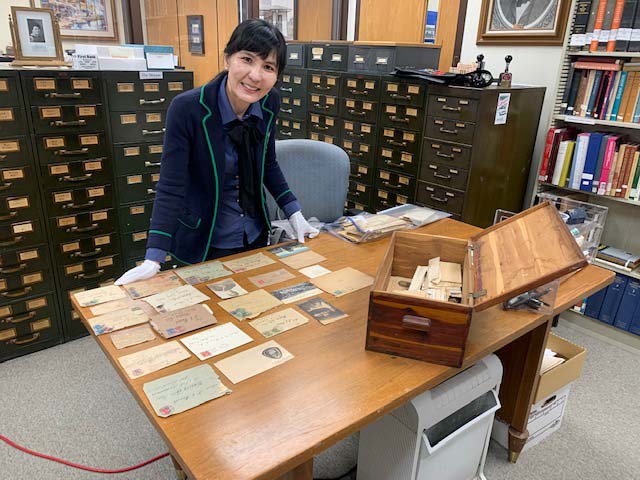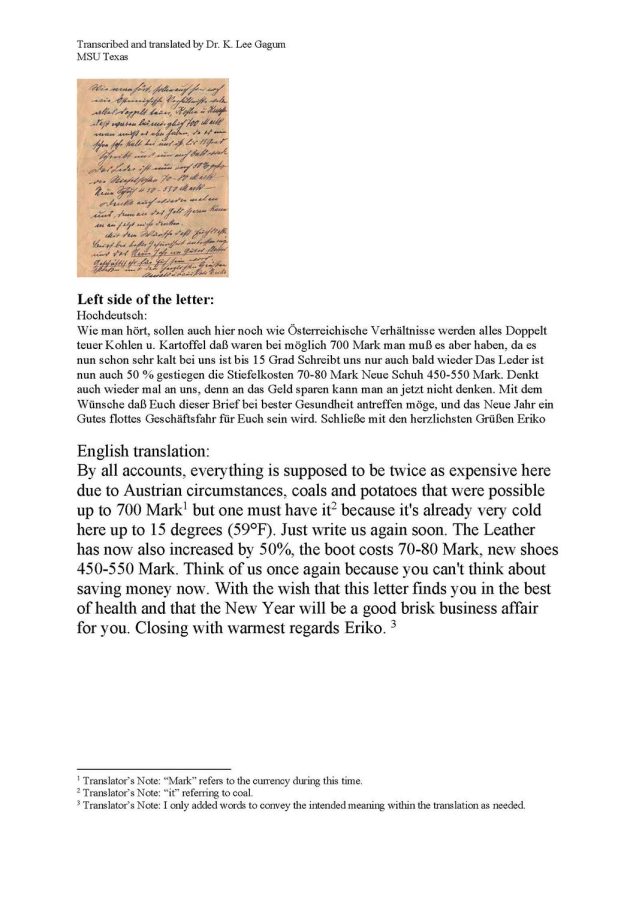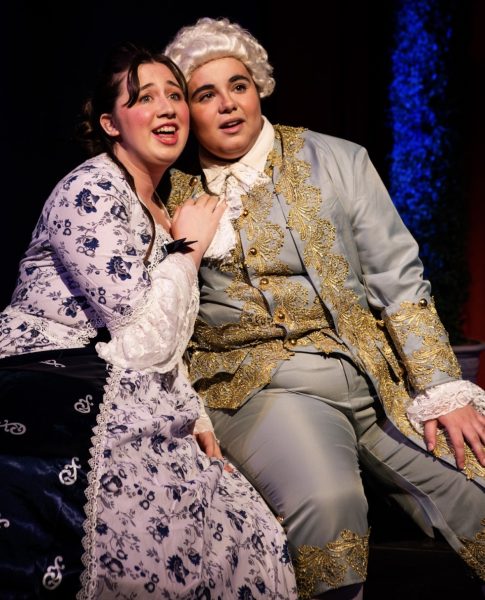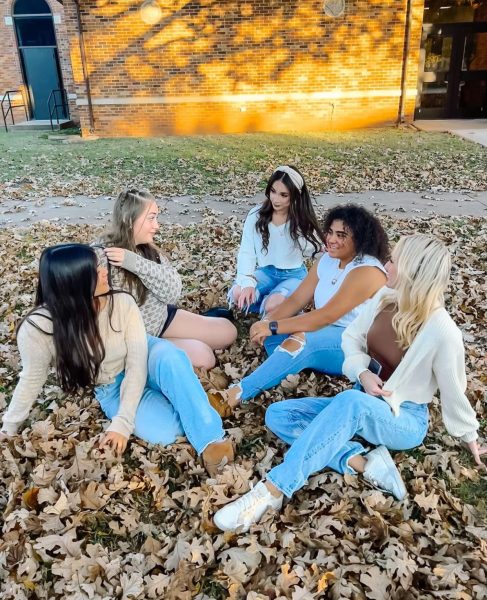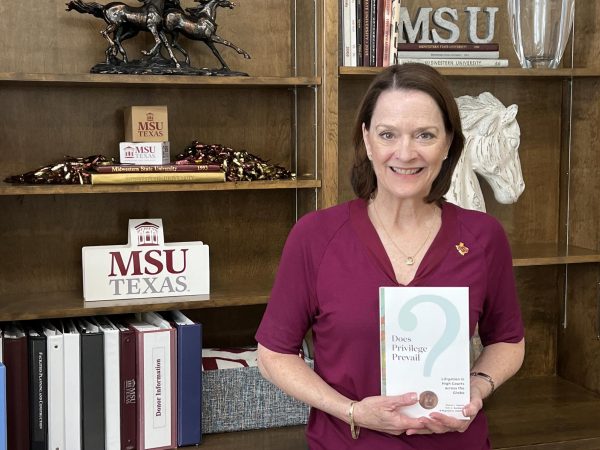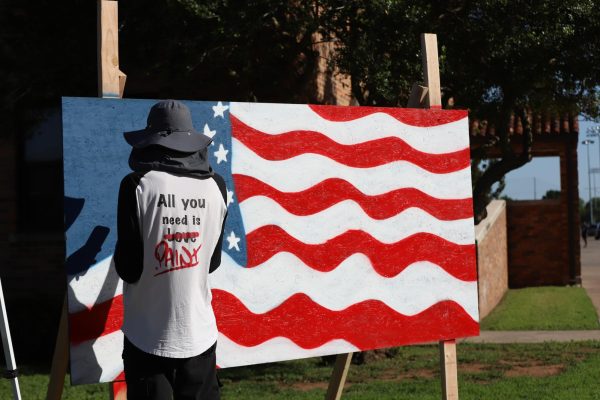A history nearly lost: MSU professor helps sheds light on local story
German professor Kyung Lee Gagum examines documents found in the wooden box, 2022. Photo courtesy of Wichita County Archives.
A snippet of Wichita Falls history – one that was nearly lost forever – brought about a collaboration between MSU and the Wichita County Archives. The result fascinated both sides of the partnership, shed light on a family history dating back to the 1800s and even showed what life was like for some in MSU’s founding year of 1922.
The dive into history started with the chance finding of an old wooden box at an estate sale. The seemingly innocuous box contained dozens of clearly aged letters. The finder of the box soon turned it over to the Wichita County Archives, and Bryce Blair, Wichita County archivist, said the letters likely would have been lost otherwise.
“It was actually probably going to be thrown away,” Blair said, “We just happened to luckily receive it.”
Instead, Archive members got the surprise of a treasure-trove of history. There was only one problem; the letters, dating back to the late 1800s, were written in German and no translator was readily available.
Enter Kyung Lee Gagum, German professor at MSU. Becky Trammell, marker chair for the Wichita County Historical Commission, and Archive volunteer, reached out to Gagum to see if she would be able to help translate the letters. To the mutual delight of both parties, Gagum was.
Blair said working with Gagum was encouraging due to her enthusiasm.
“It makes our job here so fun to have someone come in, she was very excited,” Blair said,“She was geeking out about all this, she loved the whole thing.”
Gagum’s initial foray into the work began with the first letter Trammell brought to her. Gagum was able to immediately pick out the phrase ‘Happy New Year 1922,’ which piqued her interest since 1922 was the year MSU began.
“I was like, ‘I want to translate this particular letter,’ because, it’s kind of like that’s our year. 1922 is MSU, so it’s perfect,” Gagum said.
On the same day, a student brought Gagum a book that turned out to be an old German dictionary.
While Gagum said she initially struggled with the older-style handwriting of the letters, the dictionary provided the necessary help to decipher the writing style. Coupled with online translation tools, Gagum had what she needed to begin, and said the project felt like it was meant to be.
“So just a really interesting fact and just the coincidence of all of this happening, I’m like ‘what are the odds?’ The day [Trammell] comes with this letter, and the whole notion of 1922, and my student bringing this old book that gave me the additional tools to decipher and transcribe the letter, so all-in-all it was just meant to be,” Gagum said.
One of the most difficult aspects of translating the letters turned out to be the rare handwriting style they were penned in. Relying heavily on the German dictionary her student found, Gagum was able to make progress.
“The translation was not a problem, like I said, I do translation work so that wasn’t a problem. It was just transcribing it,” Gagum said.
The letters told the now century-old story of the Bauch family, German immigrants who settled in Texas. Karl Bauch owned a leather shop, and corresponded with his family in Germany frequently, discussing the events of the day, deaths and new additions to the family and things as simple as the cost of everyday necessities.
With the translations now available as part of an exhibit at the Museum of North Texas History, Trammell said the exhibit highlights the importance of the Wichita Falls community working together to preserve history.
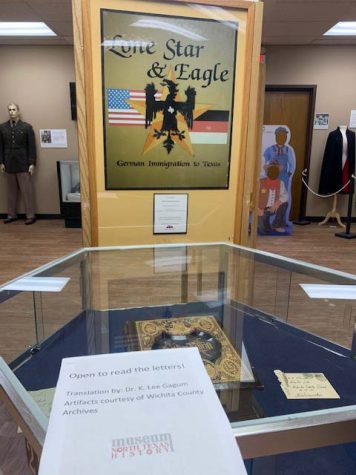
“We can’t do everything. We don’t know everything. And the fact that we can pull friends from the community, particularly Midwestern – which we need to continue to work on our relationship with Midwestern – the fact that we can pull those people in, it just augments us. It makes us even better that we have friends like that out in the community,” Trammell said.
Gagum proved to be the perfect example of that, translating a difficult writing style in 100+ year old letters that few others in the community could. In doing so, Trammell said Gagum confirmed what the Archive hoped: that the letters held a real piece of Wichita Falls history.
“We just saw ‘Look at this, there’s got to be something to this,’ and the fact that Dr. Gagum can come in and say ‘Yes, there is something to this!’ Plus the fact that we can make the Midwestern connection with the 1922, because there’s letters from 1922 that kind of give you an idea of the place and what was happening right then while Midwestern was coming up,” Trammell said, adding “These letters were written while Midwestern was being born.”
Only a handful of the dozens of letters have been translated, and Trammell said she looks forward to finding out what’s in the rest of them.
“It’s just an amazing story that’s still being written, we’re like at the first page of it right now,” Trammell said.

Hello, and thanks for stopping by! My name is Cecil Witherspoon, and I'm the new editor-in-chief of the Wichitan. I'm a mass communication senior with...



